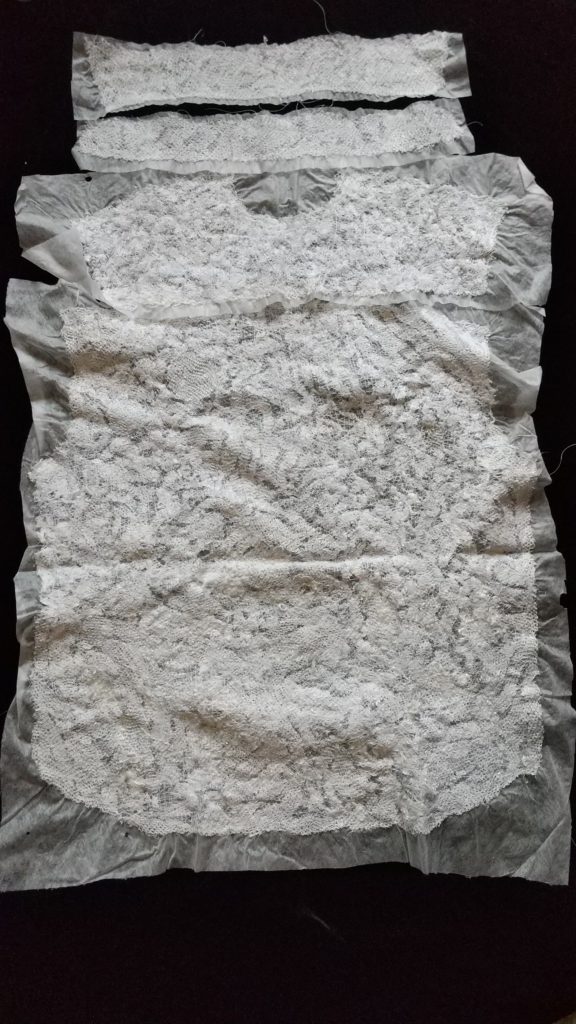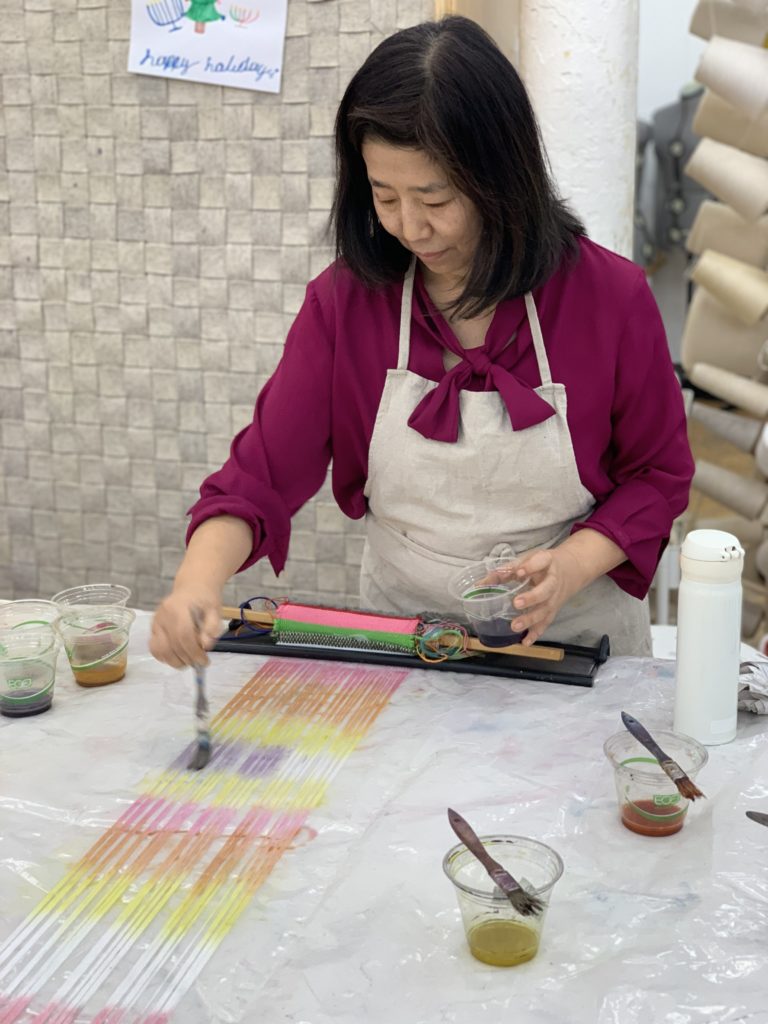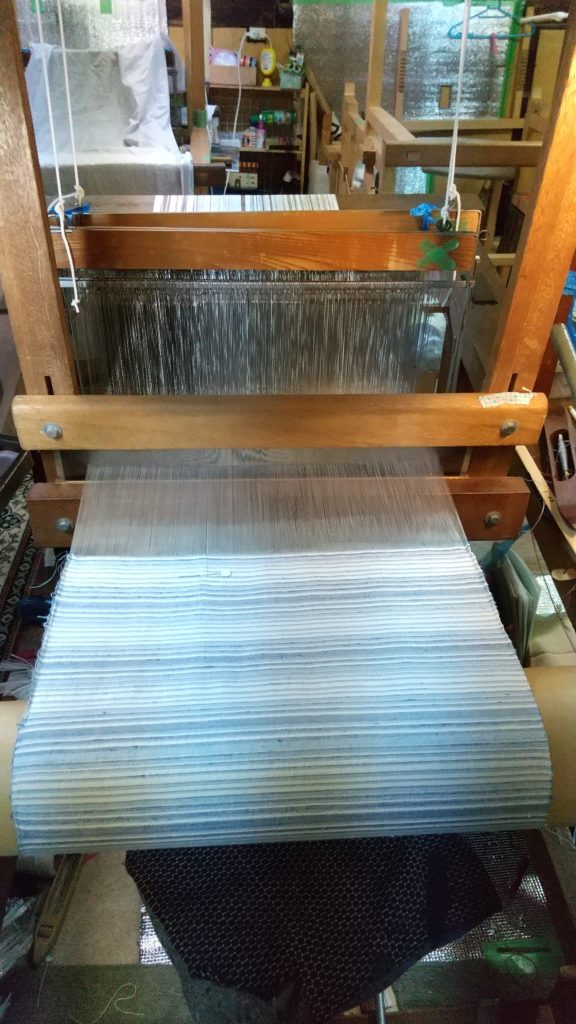AIR Artist Highlight: Aomi Kikuchi
TAC AIR 11 resident Aomi Kikuchi came to the United States to pursue her MFA at Pratt and stayed to continue her journey as a fine artist. It was not a path she considered possible in her home country of Japan—at least not in the way that she wanted it. She made the decision to study in the U.S. after visiting Miami Art Week in December 2014. She felt excited to experience the Western Art World and push her artwork in new directions.
“I saw artists making what they wanted to make, and that’s what I wanted,” said Aomi.
She steadily pursued her direction in fine art, studying at Pratt from 2017 to 2019. After graduating, she completed a family-run artist residency in Vermont. Then she started a residency at Trestle Art Space in Brooklyn that overlapped with her TAC residency. Aomi was excited to “learn new skills at TAC” while pushing her explorations. Building upon her MFA coursework, she has developed a practice of reusing fabrics and other waste generated from her artwork and preferring fragile and ephemeral materials. Her favorite fabrics are what she describes as “extremely thin silk fabrics,” such as silk organza, gauze, and goose down. She is also partial to tanmono, a woven kimono fabric, ultra-fine threads like raw silk, hemp, and metallic fiber, goose down, water-soluble fabric, and both chemical and natural dyes.

Much to her surprise, Aomi was categorized as a painter at Pratt because she used dyeing techniques on textiles. Though inspired by traditional Japanese art forms, she wanted to use “old techniques to find something new.” She was galvanized not only by the craftsman’s work she “loves,” but her dislike of practices witnessed in the fashion industry. Previously, she worked as a tailor and then as a fashion designer for a company that mass produced “very frilly dresses.”
“In the fashion industry, there are so many discarded clothes,” she said, adding that after each Spring/Summer and Fall/Winter season, loads of unsold clothes are dumped.
Disillusioned, she was happy to leave the industry and fortunate to pick up new skills and insights.
Something that distinguished her was her ability to achieve more than one creative undertaking: “Most designers don’t know how to sew; they draw patterns,” said Aomi. Then low-wage laborers sew and assemble the clothing. Yet she found herself capable of achieving both tasks because of her jobs in tailoring and design. As a young mother, she began home dyeing experiments out of pure curiosity. For years, art became her private pursuit. Her combined abilities and experiences eventually led her to sculpture and installation work at Pratt, which she continued at TAC until she fled New York City in March.

At TAC, Aomi also delved into natural dyes and found herself interested in the boundary between dyeing and staining. She hopes to try dyeing with rust, mold, soil, blood, and foods “that cause unintentional stains.” She also finds herself asking what the boundary between embroidery and cutwork and rags is: “What is material in the first place?” Central to her process is the idea of repeating destruction and reproduction in her attempt to “understand the cycle of infinity.” She cites Buddhist and Shinto philosophies as major inspirations.
During lockdown, Aomi has carried on another TAC-borne fascination: weaving. Initially attracted to weaving because of the Japanese tradition of weaving kimonos, she has since come to appreciate weaving as a universal art form “widely shared by all humanity.” She was able to continue her weaving learning in Japan, and has been studying from a Kyoto weaver. When she is not at her teacher’s studio, she works from her home studio, and she was able to keep her practice during the lockdown. Building up on the body of work she has started developing at TAC, Aomi completed a knitted kimono, a handwoven kimono, a deconstructed shirt made from scraps from the knitted kimono and other work.
Through online support halfway around the world, the TAC residency kept Aomi occupied with feedback regarding her persistent merging of contemporary investigations with her admiration for traditional crafts.

For the future after the residency, Aomi is planning for new exhibitions and projects, while continuing to experiment with new materials and techniques : “I am happy to play.”
Aomi's work was featured in the Subtle Speaks, TAC AIR 11 Final Exhibition (September 19-28, 2020). Check the online exhibition to see more from this artist.